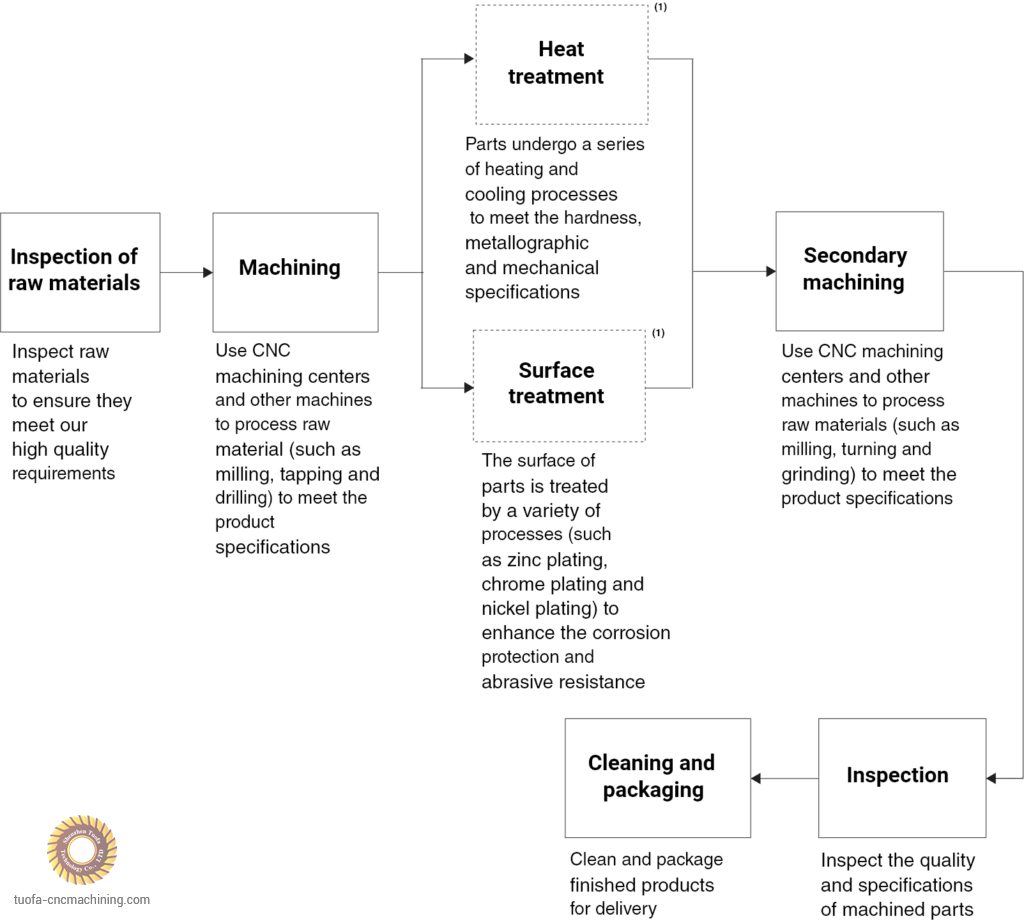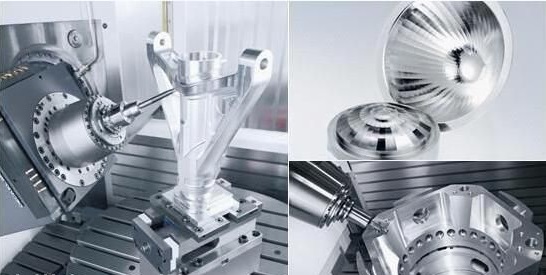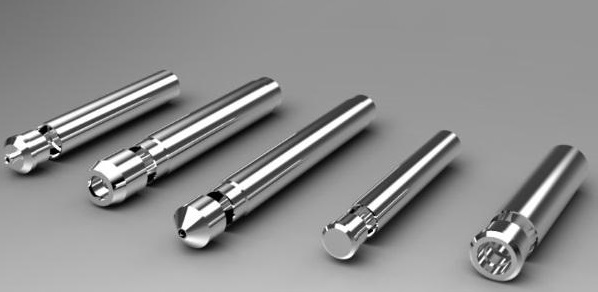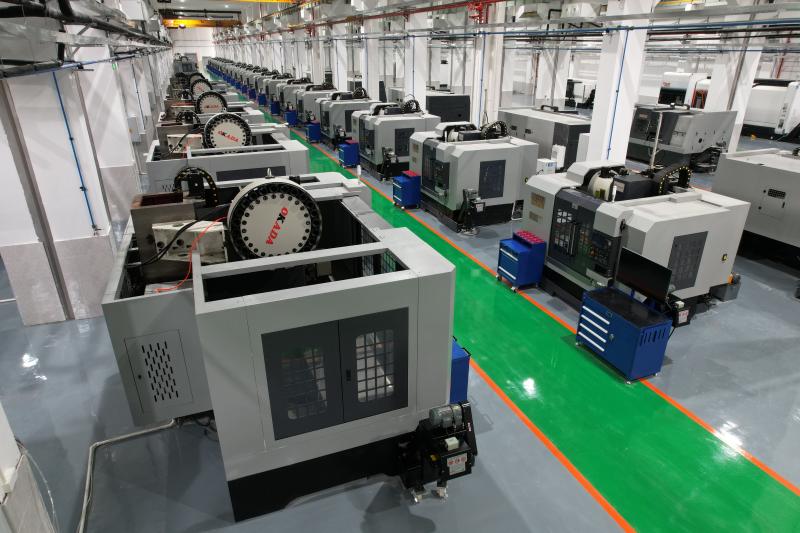Precautions for precision machining of complex parts
 Oct 25,2022
Oct 25,2022

With the needs of social development, the current product parts not only require strong practicability, but also have higher and higher requirements for appearance, which makes the production process continue to improve, and the processing requirements are also higher and higher. How to ensure accuracy and surface finish in actual processing?
Precision machining can be classified into cold machining and hot machining. According to the temperature state of the workpiece, it can be divided into cold processing and hot processing. Generally, it is processed at room temperature without causing chemical or phase changes of the workpiece, which is called cold processing. Generally, the processing above or below the normal temperature will cause the chemical or phase change of the workpiece, which is called hot processing. Cold machining is also divided into cutting and pressure machining. Heat treatment, forging, casting and welding are common hot working.

Precision machining process
The process effect of precision machining mainly includes the following five aspects:
1. The geometric shape and mutual position accuracy of parts shall reach micron or angular second level;
2. The limit or feature dimension tolerance of the part is below micrometer
3. The micro unevenness of part surface (average height difference of surface unevenness) is less than 0.1 μ m
4. Mutual accessories can meet the requirements of combining force;
5. Some parts can also meet the requirements of precise mechanical or other physical characteristics, such as the torsional stiffness of the torsion bar of the float gyroscope, the stiffness coefficient of the flexible element, etc.

Precision machining is realized by using precision machine tools, precision measuring tools and meters under strictly controlled environmental conditions. The machining accuracy reaches or exceeds 0.1 μ m, which is called ultra precision machining. In the aerospace industry, precision machining is mainly used to process precision mechanical parts in aircraft control equipment, such as precision mating parts in hydraulic and pneumatic servo mechanisms, frames and shells of gyroscopes, air floating, liquid floating bearing components and floats. Aerospace precision parts have complex structure, small stiffness, high precision requirements, and the proportion of difficult to machine materials is large.
CNC Milling Service
Tuofa CNC Machining believes that: Precision CNC milling parts are first to determine the processing process of the parts according to the requirements of the part drawings, formulate process cards, and then compile the parts CNC machining programs according to the programming requirements, and then input them into the CNC system to verify that they are correct, and then perform tool setting operations. Trial cutting, and then determine the processing of the parts according to the results of the trial cutting, until the final parts are processed into finished parts.

1. External factors:
First of all, the influence of external factors on the machining accuracy must be excluded. For example, the horizontal tilt of a machine tool may not be abnormal for a short period. However, when running for a long time, the machine bed will be slightly deformed. Once the bed is deformed, the accuracy of each motion axis of the machine tool will be reduced, for example, the straightness of the guide rail will be reduced. Moreover, if the level and horizontal are not adjusted, the vibration or noise of the machine tool during operation will be very large, and the strong vibration will also affect the machining accuracy of the machine tool, or the electrical connector will be loose, causing the machine tool to alarm. There is also ground vibration, which will affect the machine tool, and then cause the tool to vibrate, so that the machined surface has obvious wavy knife lines on the uneven side.
2. Machine tool structure and comprehensive performance:
How can you possibly produce good parts if your machine tool is inaccurate? Generally, the number of revolutions of precision machining is very high and the progress is fast. Therefore, when selecting the machine tool mechanism, the spindle revolutions should be high, and the XY axis can be linearly tracked. . The power of the XYZ servo motor will also have a certain influence. In general, the higher the power, the more accurate the XYZ movement or stop.
3. Precision machining bits:
Different materials use different bits.
YG: suitable for precision machining iron
YG: suitable for precision machining iron
Yw: The material properties of the tool are between YG and YT
YN: suitable for precision machining of superhard materials with metal-ceramic inserts
Diamond: suitable for machining superhard materials, but not steel and iron due to their affinity
Cubic Boron Nitride: Precision Machining of Superhard Materials
Aluminum machining characteristics; the material is soft, but relatively sticky, and is prone to built-up edges compared to other materials such as steel. Therefore, there are special requirements for the precision machining of aluminum alloys. Typically, pure tungsten-cobalt carbide tools with fine grains are used without coating. Therefore, finishing should be reasonable with the use of tools. If you need to finish steel with a hardness of 52-58 Rockwell, and you use a 40-degree tungsten steel knife, the coating on the surface of the tool will wear off quickly, and the tool will be severely worn or broken. This affects the precision machining quality.
4. Clamping method:
Generally, the precision machining of complex parts will use a fixture to clamp the workpiece. The positioning, clamping, and precision here are all guaranteed by the fixture, so the fixture must have certain rationality.
Satisfy the stability and reliability of workpiece positioning during use;
There is enough bearing capacity or clamping force to ensure the machining process of the workpiece on the fixture;
Satisfy the reliability of the repeated positioning of the fixture when the fixture is adjusted or replaced;
The key to ensuring the machining accuracy of the workpiece is to correctly select the positioning datum, positioning method, and positioning components. If necessary, analyze the positioning error, and pay attention to the influence of the structure of other components in the fixture on the machining accuracy. , to ensure that the fixture can meet the machining accuracy requirements of the workpiece. The clamped workpiece must be calibrated before machining.

CNC turning service
Rough turning is the most economical and effective method for cylindrical rough machining. As the purpose of rough turning is to quickly remove excess metal from the blank, the main task is to improve productivity. The main task of fine turning is to ensure the machining accuracy and surface quality required by the parts. Generally, smaller back cut and feed rate and higher cutting speed are adopted for finishing the cylindrical surface
1. Machine error
Machine tool error refers to the manufacturing error, installation error and wear of the machine tool. It mainly includes the guide error of the machine tool guide rail, the rotation error of the machine tool spindle, and the transmission error of the machine tool transmission chain.
2. The processing principle is wrong
Machining principle error refers to the error caused by using an approximate blade profile or an approximate transmission relationship for processing. Machining principle errors mostly occur in the machining of threads, gears and complex surfaces.
3. Adjust the error
The adjustment error of the machine tool refers to the error caused by inaccurate adjustment.

4. Residual stress inside the workpiece
Generation of residual stress: residual stress generated during blank manufacturing and heat treatment; residual stress generated by cutting.
5. Environmental impact of processing sites
There are often many small metal shavings on the machining site. If these metal chips exist in the positioning surface or positioning hole of the part, it will affect the machining accuracy of the part. For high-precision machining, some metal chips that are too small to be seen will affect the accuracy. This contributing factor is identified, but there are no adequate methods to eliminate it, and it is often highly dependent on the operator's approach.
6. Manufacturing errors and fixture wear
The error of the fixture mainly refers to: the manufacturing error of the positioning element, the tool guide element, the indexing mechanism, the clamping body, etc.; the relative size error between the working surfaces of the above components after the fixture is assembled; the wear of the working surface of the fixture during use .
7. Manufacturing Errors and Tool Wear
The effect of drill error on machining accuracy varies by drill type. The above are some common problems that affect the machining accuracy.
 Tel/WeChat:
Tel/WeChat:  Email:
Email: 
 Home
Home
 2025 Development Trend of CNC Machine Tools in China
2025 Development Trend of CNC Machine Tools in China 







